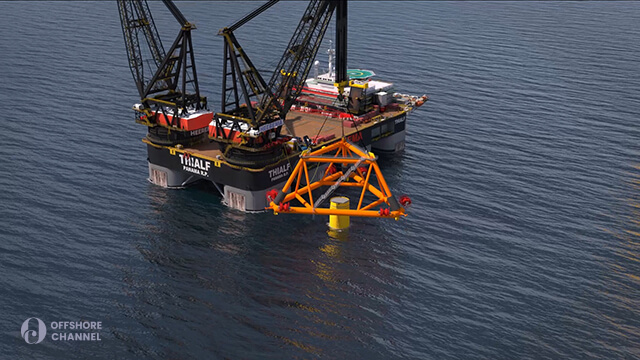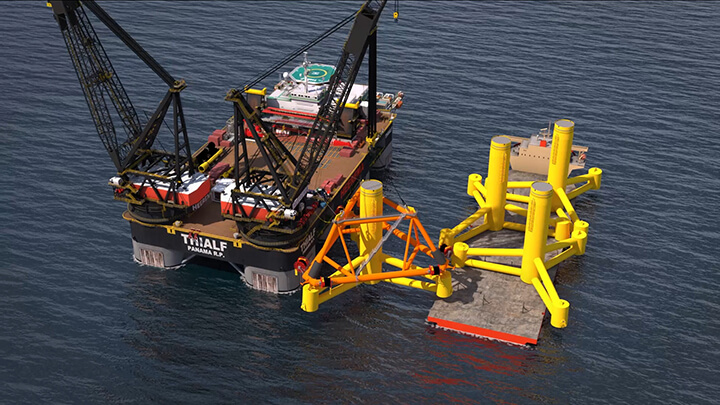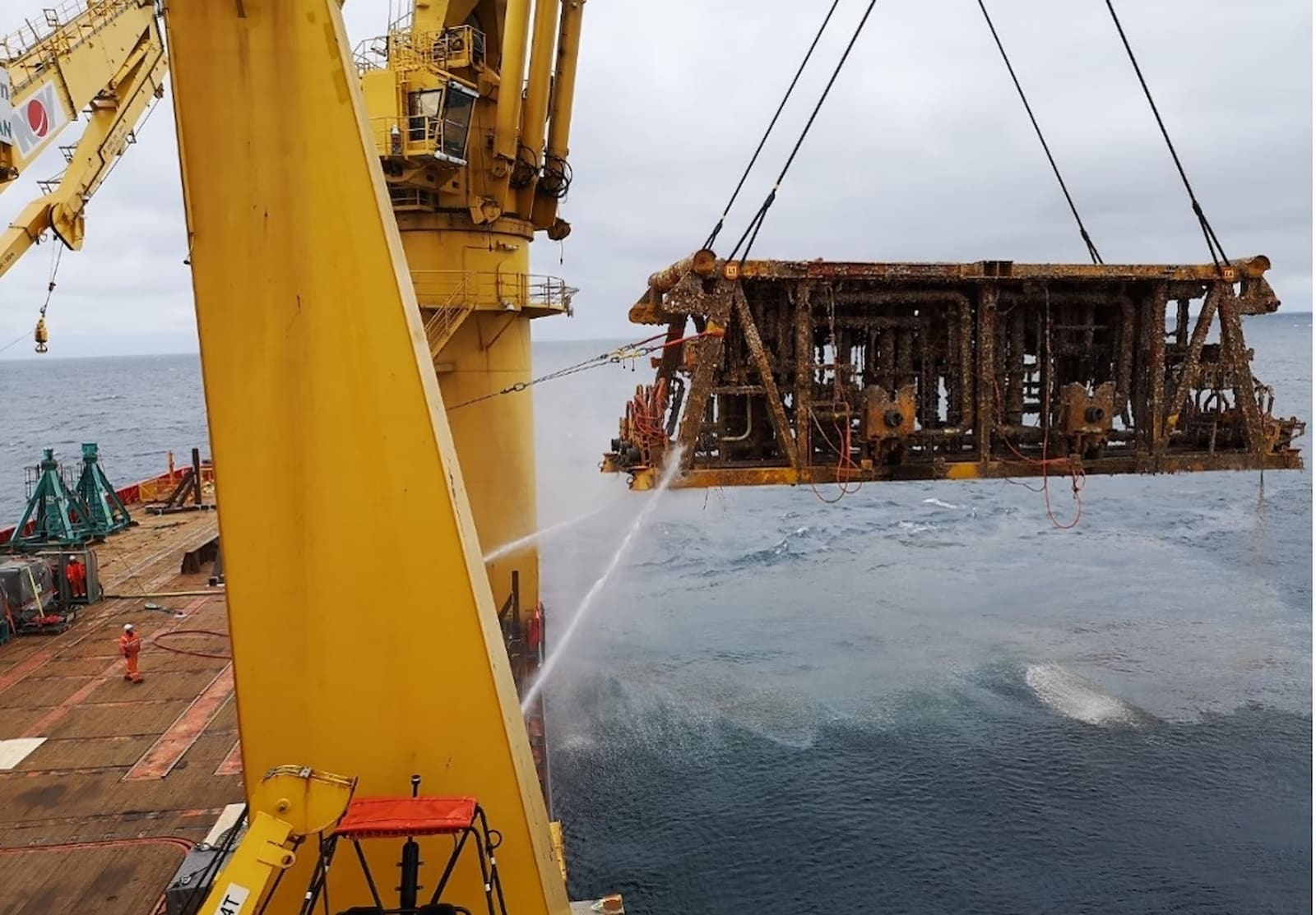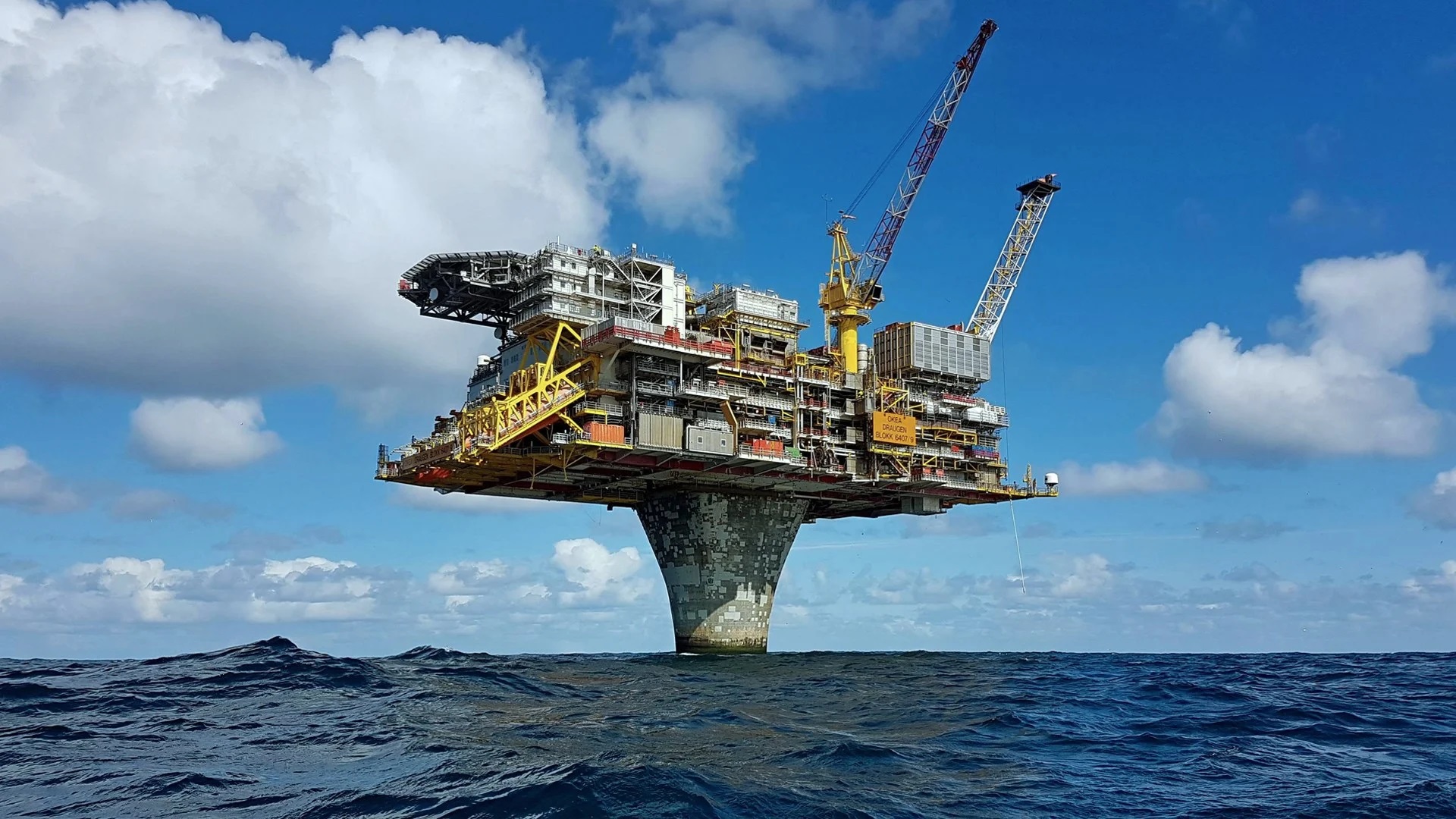Introducing Heerema’s novel floating wind installation method to upscale the commercialization of offshore floating wind
Heerema’s Floating to Floating wind installation method from Heerema Marine Contractors on Vimeo.
Offshore floating wind will be essential for the world’s energy transition, but methods under development can be costly, time-consuming, and ultimately prevent the commercial upscaling of this new frontier in offshore wind.
Heerema is committed to supporting clients in the offshore wind market and ensuring floating offshore wind can provide the energy the world needs to transition.
Appreciating the logistical challenges for deployment at scale Heerema Marine Contractors has developed a new method for offshore floating wind installations. The company has significant experience in the complexities of installing floating structures offshore using its fleet of floating crane vessels. Heerema approached the development of the new Floating to Floating installation method with the following goals in mind:
• How can the Levelized Cost of Energy in offshore floating wind be reduced?
• What can be done to improve schedule robustness and duration?
• How can Heerema remove bottlenecks in the supply chain?
Floating to Floating installation method
Heerema’s Floating to Floating installation method was developed to deliver solutions to industry challenges, such as efficient use of resources like steel and port infrastructure, offshore logistics and maintenance, and reaching the required scale and rate of installation.
Currently, there are various proposed methods that involve assembling floating foundations (floaters) in port before wet-towing to the field. This presents logistical challenges, as well as there being pressure on the number of suitable harbors.
Floating to Floating Installation
Therefore, Heerema has developed an alternative method that does not require a wet-tow and removes the need for marshalling yards. Using the floating to floating installation method floaters can be constructed on land before being dry-towed on a transport vessel to the location. After arrival, they will be installed using Heerema’s floating installation frame to lift the floaters from the vessel.
After that, they will be installed on location. Heerema’s floating installation frame will submerge the floaters down by weight, removing the need for high-tech ballasting or tensioning systems and reducing installation duration. The bottom foundation work can be executed in parallel by optimizing the capabilities of Heerema’s semi-submersible crane vessels.
Jeroen van Oosten, Business Unit Director Wind
‘We want to show an alternative solution for installing offshore floating wind, especially targeting some of the bottlenecks for scaling up. We strongly believe that by opening up to new ways of working and collaboration floating wind can reach the potential the industry is looking for.’
Delivering a lower EPC cost
The floaters’ volume and weight are reduced by removing the need for wet-towing. Also, the floater is lifted directly from the transportation asset in the field, which means both the floater and wind turbine generator can be optimized for in-place conditions only.
A low-tech floater design is possible by integrating installation requirements such as ballasting provisions into reusable installation tooling, removing the requirement to build these functionalities into each floater.
Reducing transport and marshalling costs and infrastructure requirements
By efficiently using space onboard transport vessels to deliver multiple floaters directly from the fabrication yard to the offshore wind site transport and marshalling costs are significantly reduced.
By removing the need for in-port assembly of the floater and WTG there is less space and draught required in the port and reduced quayside capacity, which helps avoid one-off mega-investments in port areas.
Ensuring higher, more efficient, and predictable field delivery
By removing time-consuming and highly weather-sensitive wet tows and mooring connections, higher throughput can be achieved on floating wind projects. The floating to floating installation method means floater and WTG campaigns can be decoupled, reducing supply-chain pressure, and resulting in a more efficient process.

The crane-supported floating to floating installation method is built on proven technologies from the oil and gas floating platform industry. It allows the saving of tons of steel per floater and will reduce overall project CAPEX.


